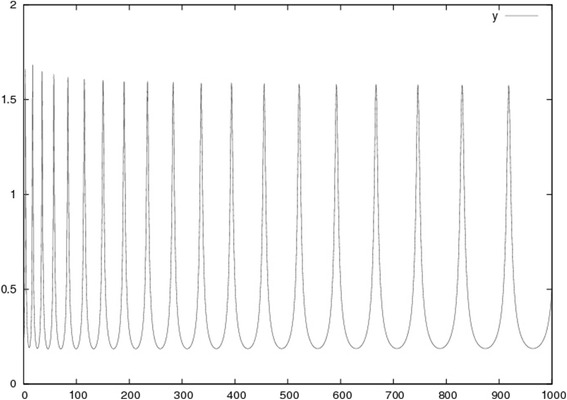Fig. 2.

The Ten-m oscillator. In the mathematical model, Eqs. (3,4), k 2 is varied from 0.75 to l/100th of this, simulating control from FGF8. The Hill coefficient is 2, and the other Hill coefficient m is 1.25, initially, approaching when k 2 goes down. k 3 is taken initially to 0.49, close to k 3c (Eq. 15), and when k 2 varies by two orders of magnitude, k 3 varies with a modest factor 3.5. The result is a relatively rapid oscillation at first, with T p = 10.5, but gradually, the period grows and reaches values of ~ 10 times larger than in the beginning. In experimentally observed gene expression waves, the period grows with a factor of about 6, after which the oscillation is trapped by a bistable system
